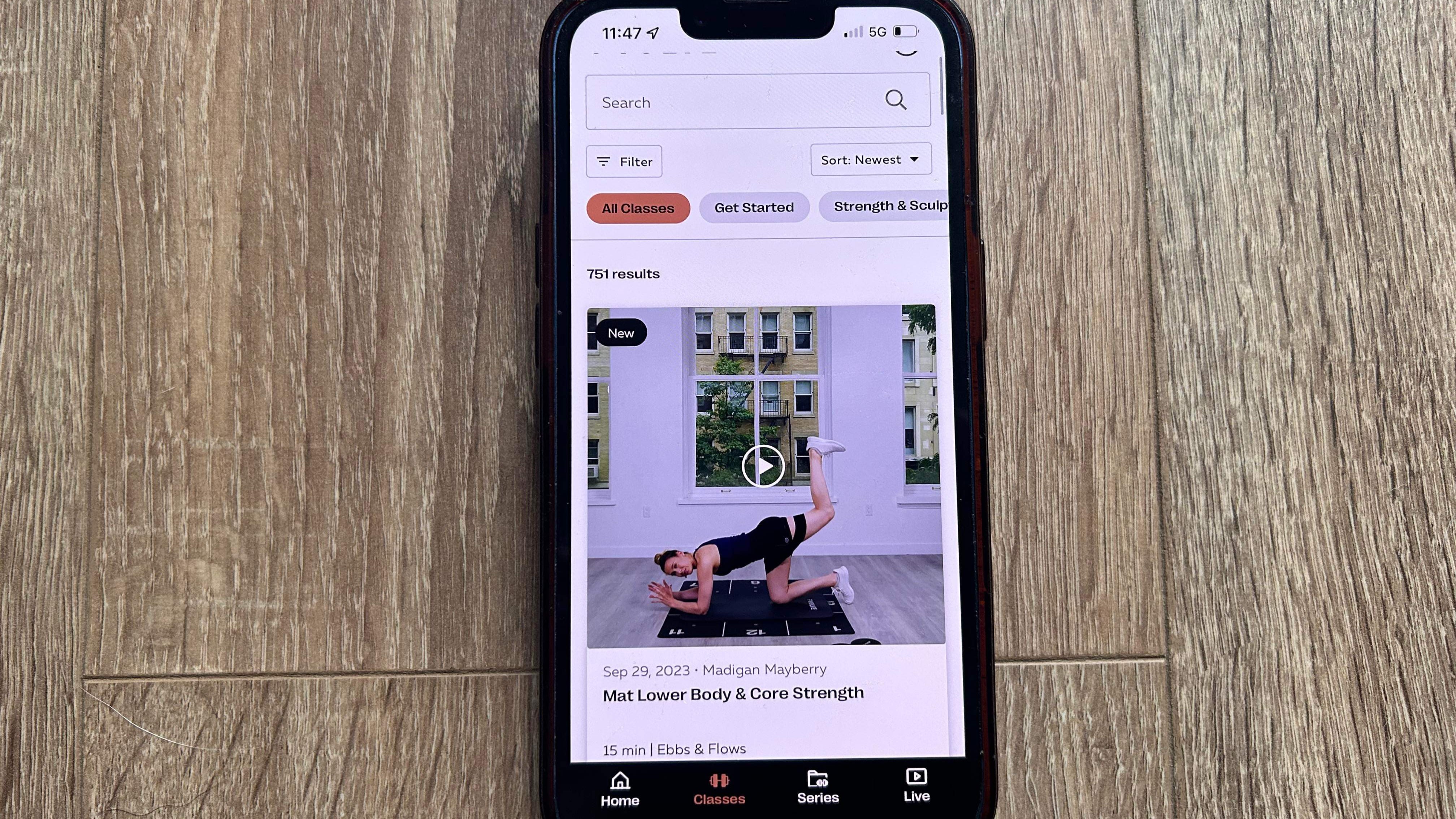I used Jennifer Aniston’s favorite workout app for three weeks and now I'm a Pilates convert
Jennifer Aniston has partnered up with the Pvolve training app, which features deceptively difficult workouts


I’ve always prioritized running and strength training over other styles of exercise. I do running for fun, and I strength train to make sure I can keep running without injuries. I've tried hot yoga, Pilates and slow-style exercise as well, but I find it a bit boring.
However, when the opportunity came up to test the Pilates-inspired workout app Pvolve, I was intrigued. I was nearing the end of a marathon training plan and my body was in need of some TLC. Jennifer Aniston had also partnered with the brand and given it her seal of approval—and if she recommends something, I'm trying it.
The workouts focus on low-impact, resistance-based movements. A lot of the sessions can be done without equipment, but you can also buy various Pvolve exercise tools to tap into more challenging workouts. I tried the app with the ‘signature bundle’, which includes a precision mat, P.ball and P.band plus a one month subscription.
There are several different styles of workout on the app, including cardio sessions, strength training routines, stretching sequences and meditations. I tried all of the above, and was surprised at how effective I found the virtual classes.
Pvolve signature bundle: was $199.99, now $179.99
Save $20 This bundle from Pvolve comes with the precision mat, Pvolve exercise ball and the Pband. It will also grant you a year's access to the virtual and live classes on the app, which can help you strengthen your body, improve your mobility and boost your cardio fitness.
A post shared by Jennifer Aniston (@jenniferaniston)
A photo posted by on
The Pvolve method
Pvolve bills itself as a 'science-backed' workout app. It has a clinical advisory board that designs and curates the workouts based on recent exercise studies. But the main difference I noticed between Pvolve and other apps is that it focuses on low-impact movement: there's no jumping involved, even during the cardio classes.
Classes fall under seven different categories: strength & sculpt, progressive weight training, cardio burn, mat definition (core-focused workouts), recover & stretch, movement therapy and meditation. You can also filter classes by their length, body area and intensity. There are live classes too, streamed via Zoom, where you can chat with trainers before and after sessions.
The workouts encourage slow, controlled movements that work smaller, overlooked muscles. Even the larger compound exercises that build full-body strength are done at a slower pace. This was difficult for someone who's used to running and doing faced-paced HIRT-style workout, but I still enjoyed the challenge.
Start your week with achievable workout ideas, health tips and wellbeing advice in your inbox.
Here's everything I learned about the app—and myself—after using it for three weeks.
You don't need weights to challenge your muscles
If you think the only way to challenge your muscles is with heavy weights and a long gym session, think again. These workouts hurt and made me feel weak. I didn't find this disheartening, though—it motivated me to get stronger.
The first workout I tried was a standing upper-body sculpt, which used a resistance band. It strengthened my shoulders, upper-back and arms in just 15 minutes and my muscles burned for quite some time after.
I then moved onto some equally challenging lower-body workouts. I have to admit, the expensive precision mat came in handy during these sessions. The mat costs a whopping $89.99, but I found that its markers helped me find the correct position for each exercise.

Virtual classes aren't always boring
I get bored when I’m not doing something fast and high-impact. I also find I'm easily distracted when I'm trying to do an at-home workout. But I was pleasantly surprised by how engaging I found this app. The trainers kept me focused and the challenging workouts meant that I didn't have the energy to get distracted.
I also held the image of Jennifer Aniston’s rock hard abs in my mind during the core workouts, which helped me push through the pain, knowing that I was on the path to greatness.
Is Pvolve worth it?
The Pvolve app-only membership costs $14.99 a month ($149.99 a year). If you get the signature bundle, which has a ball, precision mat and resistance band, you have to pay $199.99. There's also a a 'transformation bundle' which costs $624.99, and comes with 13 different pieces of equipment, including ankle bands, hand weights, gliders and a foam rollers.
Equipment isn’t required to take on plenty of the Pvolve workouts, and while I did get a lot of benefits from the precision mat, I'd hesitate to recommend forking out over $600 for home workout equipment. For me, the $199.99 signature bundle hits the sweet spot, offering tools that will challenge you without over-cluttering your living room.
In my three weeks using Pvolve, I got stronger and the workouts got easier. I'd recommend the app to anyone who enjoys Pilates-style exercise routines, or who needs to do low-impact workouts to protect their joints.

Lois Mackenzie is a Fitness Writer for Fit&Well and its sister site Coach, covering strength training workouts with weights, accessible ways to stay active at home, and training routines for runners. She joined the team from Newsquest Media Group, where she was a senior sports, trends, and lifestyle reporter. She is a dedicated runner, having just completed her first marathon, and an advocate for spending time outdoors, whether on a walk, taking a long run, or swimming in the sea.
Lois holds a Master's degree in Digital Journalism, and has written for Good Health, Wellbeing & The Great Outdoors, Metro.co.uk, and Newsquest Media Group, where her reporting was published in over 200 local newspapers.
